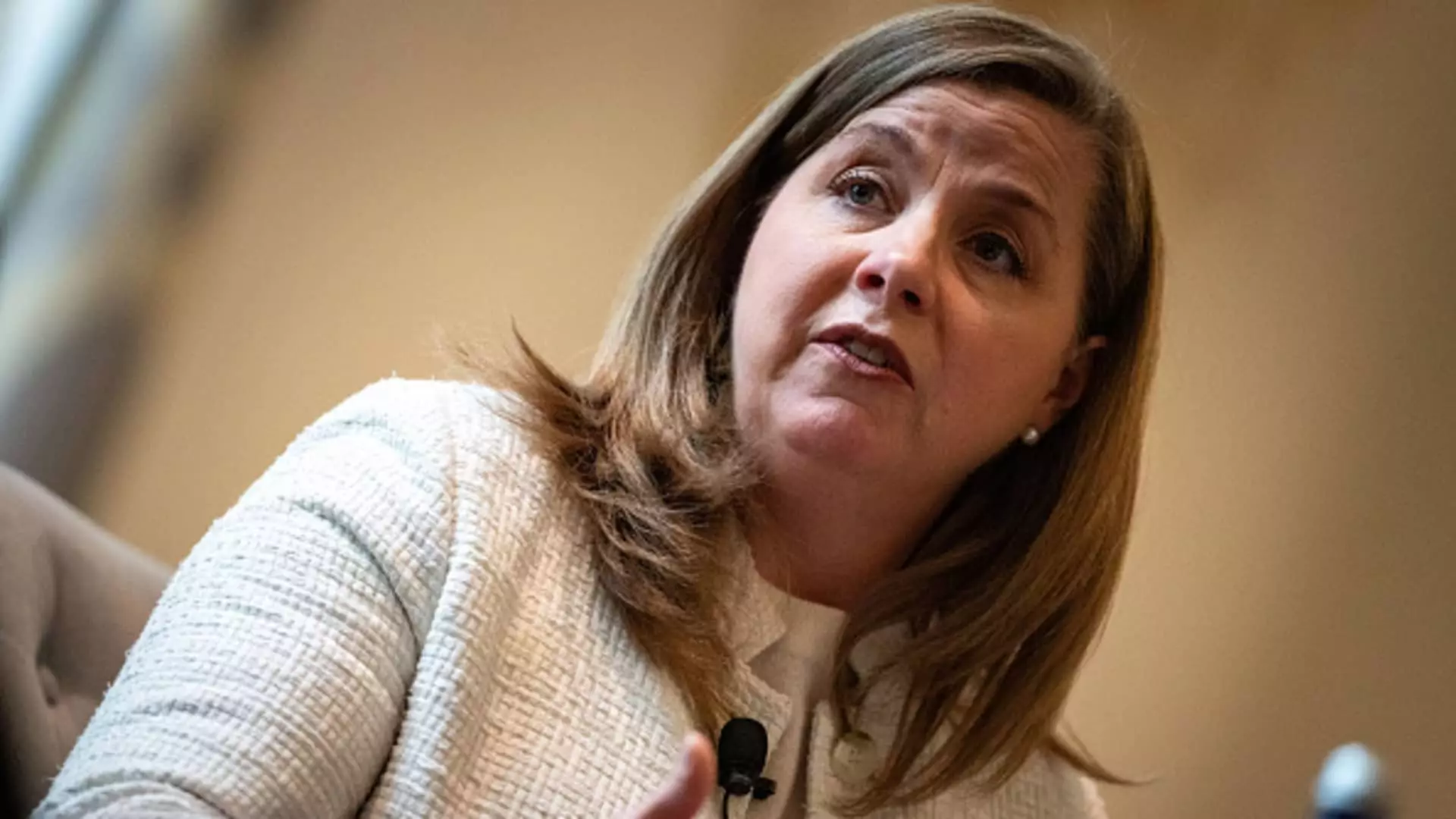The discourse surrounding the Federal Reserve’s monetary policy has gained renewed attention recently, particularly following the comments made by Governor Michelle Bowman. In her remarks to a group of bankers in California, Bowman articulated her support for recent interest rate cuts while simultaneously expressing skepticism about the necessity for further reductions. Her nuanced viewpoint not only reflects her position within the Federal Reserve but also highlights the ongoing complexities of managing inflation in the current economic climate.
Bowman’s endorsement of the quarter-percentage-point reduction in December underscores her acknowledgment of the adjustments needed in response to shifting economic indicators. She framed her support for this rate change as the culmination of what she views as a critical phase in policy recalibration by the Federal Open Market Committee (FOMC). This suggests that while she recognizes the need for flexibility in monetary policy, her belief rests on certain foundational principles that guide her decision-making. The current policy rate, according to Bowman, approximates a “neutral” zone. This neutrality is significant—it implies a state in which monetary policy is neither stimulating nor constraining economic growth.
Despite Bowman’s affirmation of the recent cuts, she does not believe additional decreases are warranted. Her caution is rooted in the lingering concerns over inflation rates, which she described as “uncomfortably above” the Fed’s target of 2%. This duality of supporting necessary action while simultaneously advocating for caution serves as a critical reminder that the trajectory of inflation can be precarious and unpredictable.
The statistics presented by Bowman concerning inflation rates offer a clear depiction of the prevailing economic situation. The Fed’s preferred inflation measure, standing at 2.4% in November, reveals the complexities of inflation metrics. Particularly noteworthy is the core inflation rate, which excludes volatile categories like food and energy. At 2.8%, core inflation not only remains elevated but indicates a stagnation that Bowman believes could undermine the progress made throughout the year. Her statement that inflation has “stalled” raises important questions about the effectiveness of previous monetary policy measures.
Bowman is not operating in a vacuum; her insights are part of a larger conversation among fellow FOMC members who are grappling with inflation’s implications. The minutes from the December meeting reveal a split sentiment, highlighting a collective concern about inflation while projecting confidence that it will return to target levels, albeit not until 2027. Such divergent views within the committee underscore the challenges of consensus-building in policymaking and the necessity of adapting strategies in response to evolving economic indicators.
Bowman’s conservative approach contrasts sharply with the more optimistic perspective shared by other Fed officials, including Governor Christopher Waller. His belief that additional reductions to the policy rate are necessary stands in stark opposition to Bowman’s cautious outlook, indicating a broader debate within the Federal Reserve about the future of interest rate policy. This internal discourse reveals the intricacies of economic forecasting and the various factors that influence policymakers.
In light of the stock market’s robust performance and rising Treasury yields, Bowman attributes these indicators as reflections of restrictive monetary policy’s impact on economic activity. Her stance that careful and gradual adjustments are preferable suggests a strategic approach to mitigating inflation without derailing growth momentum. This philosophy emphasizes the importance of methodical decision-making in an unpredictable economic landscape, where aggressive moves might provoke adverse reactions.
As a permanent voting member of the FOMC, Bowman’s perspective is critical as the committee navigates impending challenges, especially with the potential changes that may arise from the incoming administration. Her call to refrain from “prejudging” new policies indicates her awareness of the complexities interwoven with broader political dynamics affecting the economy.
The implications of her insights extend beyond immediate monetary policy to encompass broader concerns, such as fiscal measures and their potential impacts on inflation and economic growth. As the Federal Reserve grapples with these competing forces, Bowman’s advocacy for a balanced approach to policy adjustments will likely play a significant role in shaping future discussions within the FOMC.
Governor Michelle Bowman’s remarks shine a light on the delicate balance that central banks must maintain in an ever-evolving economic landscape. Her emphasis on cautious policy recalibration amidst existing inflationary pressures serves as a vital blueprint for navigating future monetary challenges.

